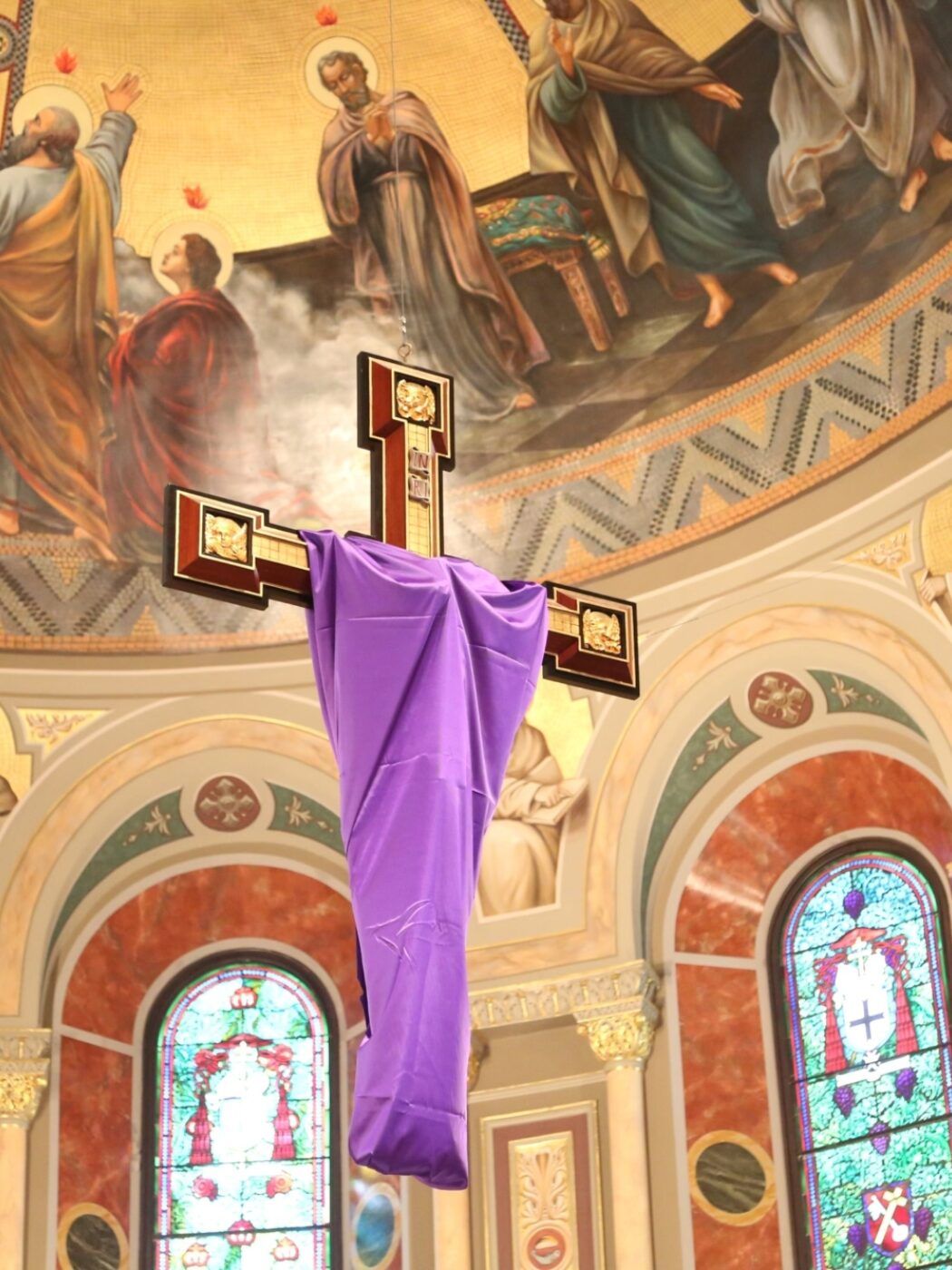
The last two weeks in the season of Lent are called Passiontide which begins on the Fifth Sunday of Lent. This is when the Church shifts her focus from Christ in the desert (the Gospel for the First Sunday of Lent) to Christ during His Passion.
During this period of Passiontide, you may have noticed in your parish that the crucifix and other statues and images around the church have been veiled with a purple cloth.
In the Roman Missal we find the instruction, “In the Dioceses of the United States, the practice of covering crosses and images throughout the church from [the fifth] Sunday [of Lent] may be observed. Crosses remain covered until the end of the Celebration of the Lord’s Passion on Good Friday, but images remain covered until the beginning of the Easter Vigil.”
Why do we veil images?
The practice of veiling images alerts us that something is different, it can be startling at first, but the last two weeks of Lent are a time of immediate preparation for the celebration of the Sacred Triduum. The veils are hard to miss and they serve as a reminder to get ready!
The veiled images build within us a longing for Easter Sunday. The veils seem out of place, and even counterintuitive. It can seem strange that the crucifix is covered up during Passiontide. Through this absence of images, our senses are heightened and we become more aware of what is missing. Similarly, the suppression of the Alleluia during Lent effectively demonstrates that we are in exile from our true Home, where the angels sing Alleluia without ceasing.
When images are unveiled before the Easter Vigil, we are reminded that we, in a sense, live in a veiled world. It is through our own death that we are able to see our true home, and the veil is lifted. Christ lifts the veil through His Resurrection.
Jesus told her, “I am the resurrection and the life; whoever believes in me, even if he dies, will live, and everyone who lives and believes in me will never die. John 11:25-26

